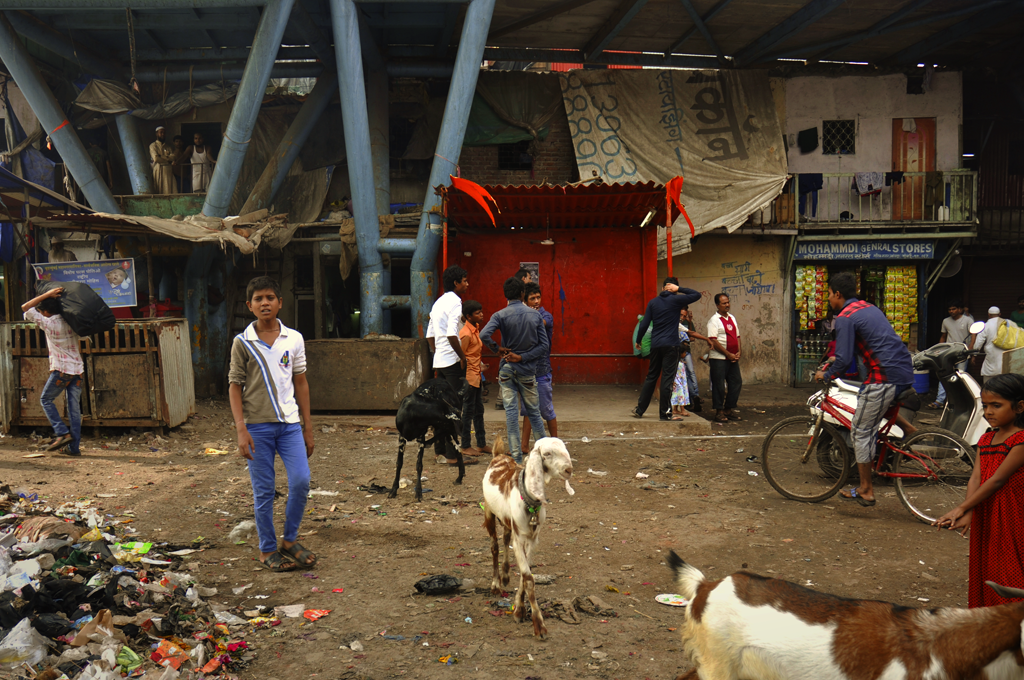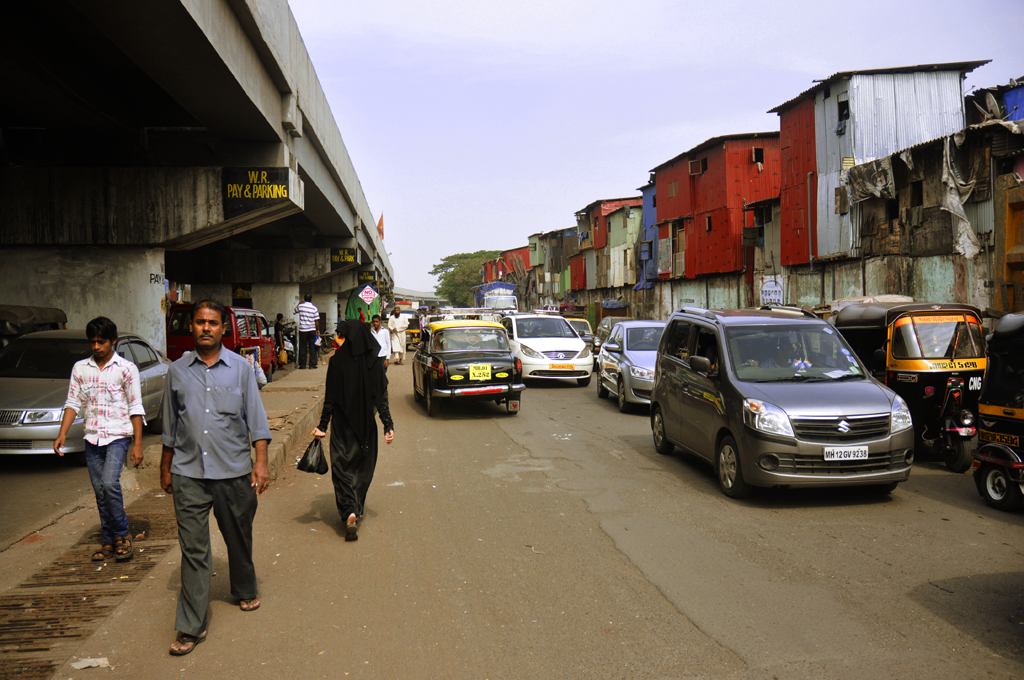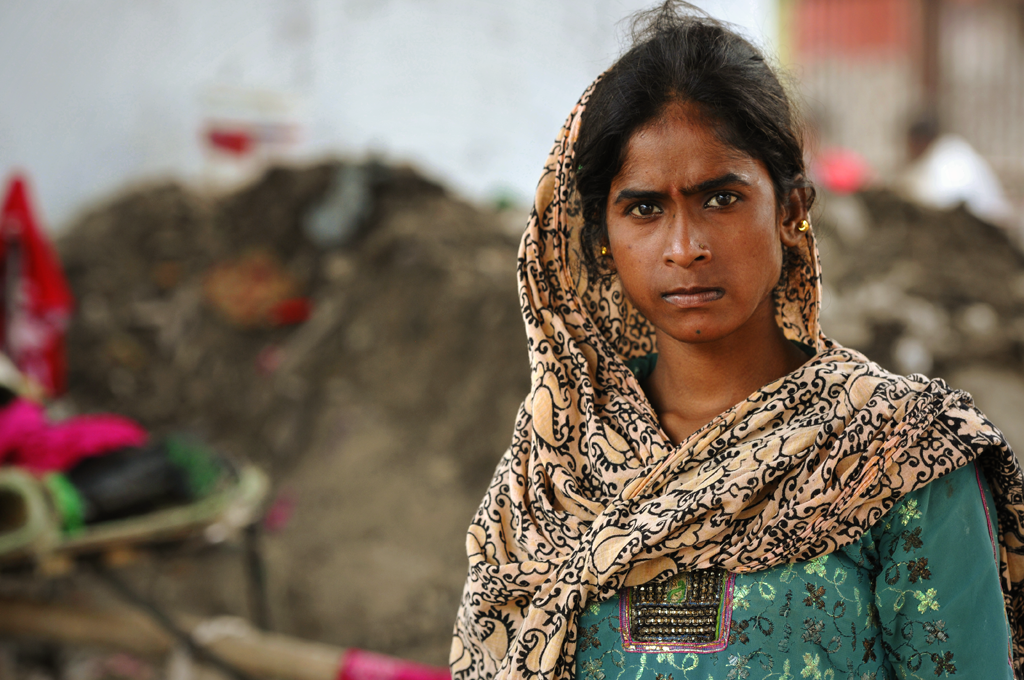Bandra portrait photo from Mumbai taken by the photographer.
Like most places in Mumbai, Bandra is split by the local railway-line into West Bandra and East Bandra, where photographer Kristian Bertel captured some intriguing portraits. Bandra located in West Mumbai has the sobriquet as the 'Queen of the Suburbs'.
Bandera, Bandura, Bandore, an area with many names
The suburb has a long seafront, with promenades located along Carter Road, Bandstand and Reclamation. Most roads and places in Bandra were given English names during British rule. They have been renamed over time but many are still popularly known by their old names. The part of Bandra located on the western side of the railway line developed into a fashionable suburb by the middle of the last century. In the mid-to-late 1990s, the eastern part emerged as a commercial and administrative hub. It houses the Family Court, Bandra-Kurla Commercial Complex, the office of the state housing development authority, the office of the District Collector, and so on. The residential quarters of the employees of the Maharashtra State Government are also located here. When the Portuguese started trading there, they called it Bandora many years ago, and later the name had variations: Bandera, Bandura, Bandore, Pandara, Bandorah, Bandara and finally Bandra.
Like most places in Mumbai, Bandra is split by the local railway-line into West Bandra and East Bandra, where photographer Kristian Bertel captured some intriguing portraits. Bandra located in West Mumbai has the sobriquet as the 'Queen of the Suburbs'.
Bandera, Bandura, Bandore, an area with many names
The suburb has a long seafront, with promenades located along Carter Road, Bandstand and Reclamation. Most roads and places in Bandra were given English names during British rule. They have been renamed over time but many are still popularly known by their old names. The part of Bandra located on the western side of the railway line developed into a fashionable suburb by the middle of the last century. In the mid-to-late 1990s, the eastern part emerged as a commercial and administrative hub. It houses the Family Court, Bandra-Kurla Commercial Complex, the office of the state housing development authority, the office of the District Collector, and so on. The residential quarters of the employees of the Maharashtra State Government are also located here. When the Portuguese started trading there, they called it Bandora many years ago, and later the name had variations: Bandera, Bandura, Bandore, Pandara, Bandorah, Bandara and finally Bandra.
Animals are looking for something to eat in Bandra, Maharashtra, Mumbai.
Photographing people at the Bandra Railway Station
The Bandra railway station is located on the Western line of the Mumbai Suburban Railway and the photographer went to this area of Bandra to take som intriguing portraits of the people living here. "- I began andthe Bandra Terminus, which is the station where trains depart to destinations further away in the country. And after that I walked along the Station Road to capture the everyday life here", the photographer says.
Photographing people at the Bandra Railway Station
The Bandra railway station is located on the Western line of the Mumbai Suburban Railway and the photographer went to this area of Bandra to take som intriguing portraits of the people living here. "- I began andthe Bandra Terminus, which is the station where trains depart to destinations further away in the country. And after that I walked along the Station Road to capture the everyday life here", the photographer says.
Photo from Bandra that depicts an Indian man with one of his legs in bandage.
Homeless people in the Bandra area of Mumbai
At the Bandra Terminus the photographer encountered a large group of homeless people, who did not want to have their portrait taken. The photographer recalls: "- Normally that does not stop me, if I see an interesting face in front of me, I use a larger lens. With some skill and the right equipment, there are no limits as to how a picture is to turn out when the photographer captures it. It is always a desicion you have to take for yourself, how long will you go for getting a photograph". When taking photos in Bandra the photographer used the easiest way to achieve his portriats by using his own feet. As he says:
"- You can get almost as close as you want to a subject just by walking up to it. It’s so easy and important to get good photos, when you are on the right location. Getting closer to your subject with a zoom telephoto lens will both isolate your subject and draw attention to it. I think that many second rate photographs are not visually interesting because the photographer has not taken the time to isolate the subject and make it stand out", the photographer says.
Homeless people in the Bandra area of Mumbai
At the Bandra Terminus the photographer encountered a large group of homeless people, who did not want to have their portrait taken. The photographer recalls: "- Normally that does not stop me, if I see an interesting face in front of me, I use a larger lens. With some skill and the right equipment, there are no limits as to how a picture is to turn out when the photographer captures it. It is always a desicion you have to take for yourself, how long will you go for getting a photograph". When taking photos in Bandra the photographer used the easiest way to achieve his portriats by using his own feet. As he says:
"- You can get almost as close as you want to a subject just by walking up to it. It’s so easy and important to get good photos, when you are on the right location. Getting closer to your subject with a zoom telephoto lens will both isolate your subject and draw attention to it. I think that many second rate photographs are not visually interesting because the photographer has not taken the time to isolate the subject and make it stand out", the photographer says.
Bandra Station Road in mumbai, India.
Mumbai, a city of contrasts
Cosmopolitan metropolis, earlier known as Bombay, is the largest city in India and the capital of Maharashtra state. Mumbai was originally a conglomeration of seven islands on the Konkan coastline which over time were joined to form the island city of Bombay. The island was in turn joined with the neighbouring island of Salsette to form Greater Bombay. The city has an estimated metropolitan population of 21 million, counted in 2005, making it one of the world's most populous cities.
Mumbai is without a doubt the financial capital of India but the economic contrasts are gripping as a photographer to see. The poverty is overwhelming in India and it is widespread. Also here in Mumbai's Bandra area. In India a variety of methods have been proposed to measure the poverty. For a long time the measurement was based and defined by a persons income to consume enough calories and be able to pay for associated essentials to survive. Since 2005, Indian goverBut a couple of years ago India moved away from the calorie calculation to a basket of goods and used rural, urban and regional minimum expenditure per city necessary to survive.
Mumbai, a city of contrasts
Cosmopolitan metropolis, earlier known as Bombay, is the largest city in India and the capital of Maharashtra state. Mumbai was originally a conglomeration of seven islands on the Konkan coastline which over time were joined to form the island city of Bombay. The island was in turn joined with the neighbouring island of Salsette to form Greater Bombay. The city has an estimated metropolitan population of 21 million, counted in 2005, making it one of the world's most populous cities.
Mumbai is without a doubt the financial capital of India but the economic contrasts are gripping as a photographer to see. The poverty is overwhelming in India and it is widespread. Also here in Mumbai's Bandra area. In India a variety of methods have been proposed to measure the poverty. For a long time the measurement was based and defined by a persons income to consume enough calories and be able to pay for associated essentials to survive. Since 2005, Indian goverBut a couple of years ago India moved away from the calorie calculation to a basket of goods and used rural, urban and regional minimum expenditure per city necessary to survive.
Young woman in Bandra, India.
Slum in Banddra, photos of poverty and slum
Mumbai's is also home to India's largest slum population, which can be seen many places in the city. Slum is defined as a heavily populated urban informal settlement characterized by substandard housing and squalor. While slums differ in size, like the one portrayed here in Bandra, and other characteristics from country to country, most of the slum areas are missing reliable sanitation services, supply of clean water, reliable electricity other basic services. Slum residences vary from shanty houses to professionally-built dwellings that because of poor-quality design or construction have deteriorated into slums.
Slum in Banddra, photos of poverty and slum
Mumbai's is also home to India's largest slum population, which can be seen many places in the city. Slum is defined as a heavily populated urban informal settlement characterized by substandard housing and squalor. While slums differ in size, like the one portrayed here in Bandra, and other characteristics from country to country, most of the slum areas are missing reliable sanitation services, supply of clean water, reliable electricity other basic services. Slum residences vary from shanty houses to professionally-built dwellings that because of poor-quality design or construction have deteriorated into slums.
Woman with a child in the Bandra area of Mumbai, India.
Bandra photos from Maharashtra, India
Kristian Bertel's Bandra photo collection is among the 6000 photos which was taken during his latest India journey. Bandra photographs that reflect a suburb in Mumbai as a city in India. On his recent journey, he has focused on the poverty in the city of Mumbai, with stories from the everyday life of the inhabitants of this city of millions. His pictures often ccaried out in portraits of people show a diverse culture of India. With the telling portrait in focus, the photographer's work consists of pictures that tell a story. "- I always try to find the personal stories behind the people I'm taking pictures of, seeking out their own personal life stories from the expressions in their faces", the photographer says.
His most recent photographic work is portraying the life in the Bandra area of Mumbai, India, where the photographer explored the suburb and the streets of Bandra. As he did with his earlier photography Kristian Bertel tells stories with dedicated portraits of a sometimes hard life in India. Kristian Bertel is working as a travel photographer and he is available for editorial and travel assignments all over Europe, Asia, Africa and in the Middle East. For further information and inquiries please:
Contact the photographer
More photos from India
If you are interested to see more photos and imagery from India, you can see one of the slideshows, which also appears on the photographer's website.
See the slideshow | press here
Bandra photos from Maharashtra, India
Kristian Bertel's Bandra photo collection is among the 6000 photos which was taken during his latest India journey. Bandra photographs that reflect a suburb in Mumbai as a city in India. On his recent journey, he has focused on the poverty in the city of Mumbai, with stories from the everyday life of the inhabitants of this city of millions. His pictures often ccaried out in portraits of people show a diverse culture of India. With the telling portrait in focus, the photographer's work consists of pictures that tell a story. "- I always try to find the personal stories behind the people I'm taking pictures of, seeking out their own personal life stories from the expressions in their faces", the photographer says.
His most recent photographic work is portraying the life in the Bandra area of Mumbai, India, where the photographer explored the suburb and the streets of Bandra. As he did with his earlier photography Kristian Bertel tells stories with dedicated portraits of a sometimes hard life in India. Kristian Bertel is working as a travel photographer and he is available for editorial and travel assignments all over Europe, Asia, Africa and in the Middle East. For further information and inquiries please:
Contact the photographer
More photos from India
If you are interested to see more photos and imagery from India, you can see one of the slideshows, which also appears on the photographer's website.
See the slideshow | press here






 RSS Feed
RSS Feed
